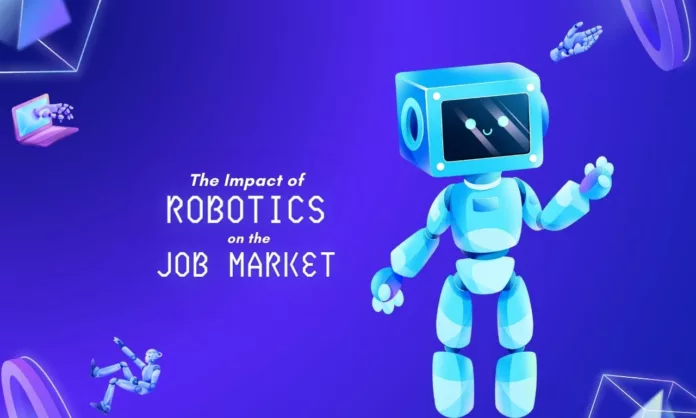The rapid advancement of robotics technology has led to significant changes in various industries, sparking both excitement and concern about its impact on the job market. Robots, once limited to factory floors, are now capable of performing complex tasks, leading to increased productivity and efficiency. However, this progress has also raised questions about the future of human employment and the potential displacement of jobs.
In this article, we will explore the impact of robotics on the job market, examining both the positive and negative effects.
Table of Contents
Automation and Increased Productivity
One of the primary benefits of robotics is the automation of repetitive and mundane tasks. Robots can tirelessly perform tasks that would be tedious or time-consuming for humans. This automation leads to increased productivity, as robots can work faster and more accurately than humans in many situations. Industries such as manufacturing, logistics, and agriculture have seen substantial improvements in efficiency due to the introduction of robotics.
Job Displacement
While automation can bring increased productivity, it also raises concerns about job displacement. As robots become more advanced and capable, there is a fear that they will replace human workers in various industries. For example, autonomous vehicles could potentially replace truck drivers, and automated customer service systems could replace call center operators. This displacement can lead to significant job losses and require workers to acquire new skills to remain employable.
Shifting Job Roles
While some jobs may be displaced by robots, new roles, and opportunities may also emerge. As technology advances, there is a growing demand for workers who can design, program, and maintain robots and automated systems. This shift in job roles requires individuals to develop technical skills and adapt to new technologies. Additionally, industries that rely on human interaction, creativity, and emotional intelligence, such as healthcare and arts, are less likely to be fully automated. Thus, there is a potential for the creation of new jobs in these areas.
Collaborative Robotics
Rather than replacing humans, robots can also be designed to work alongside humans, enhancing their capabilities. Collaborative robots, or cobots, are designed to assist human workers in performing tasks more efficiently and safely. Cobots can take over repetitive or physically demanding tasks, allowing humans to focus on more complex and creative aspects of their work. This collaborative approach can improve productivity and job satisfaction while reducing the risk of job displacement.
Skills Enhancement and Training
The integration of robotics into the job market necessitates the acquisition of new skills. Workers will need to enhance their technical skills to adapt to the changing landscape. This means that education and training systems must evolve to provide the necessary resources for workers to acquire the skills required to work alongside robots. Governments, educational institutions, and employers need to collaborate to offer retraining and upskilling programs to ensure a smooth transition in the job market.
Economic Implications
The impact of robotics on the job market also has economic implications. While automation can lead to job displacement in some areas, it can also lead to cost reductions and increased competitiveness for businesses. This, in turn, can stimulate economic growth and create new job opportunities in other sectors. However, it is crucial to address the potential income inequality that may arise due to job displacement, as not all workers will have the same access to new job opportunities.
Ethical Considerations
The rise of robotics raises important ethical considerations. As robots become more autonomous, questions arise regarding liability, safety, and decision-making. For example, in industries like healthcare, where robots are increasingly used in surgical procedures, ethical guidelines, and regulations need to be in place to ensure patient safety and accountability. It is essential to strike a balance between technological advancement and ethical standards to mitigate potential risks and ensure that robotics serves the best interests of society.
Job Market Evolution
The impact of robotics on the job market should be seen as part of a broader evolution in the nature of work. Throughout history, technological advancements have transformed industries and job markets, leading to the emergence of new roles and the obsolescence of others. While robots may replace some jobs, they can also create new opportunities and improve overall efficiency. Adapting to this evolving job market requires a proactive approach, including lifelong learning, flexible employment models, and supportive social policies.
Conclusion
Robotics technology is undeniably transforming the job market. Automation and increased productivity can lead to job displacement, but they also create new opportunities and shift job roles. The integration of robots into the workforce requires a focus on skills enhancement and training to ensure workers can adapt to new technologies. Ethical considerations and careful policy planning are crucial to address potential challenges and ensure the responsible implementation of robotics. By embracing the potential of robotics while addressing the accompanying challenges, society can navigate this technological shift and build a future where humans and robots work together to create a more efficient and prosperous world.

